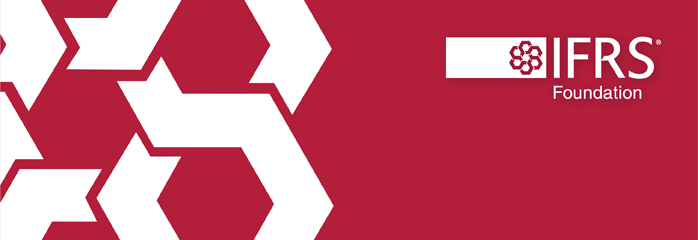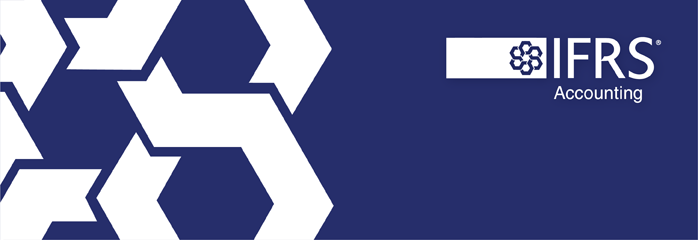The IFRS for SMEs Accounting Standard Update is a staff summary of news, events and other information about the IFRS for SMEs® Accounting Standard and related SME activities. The staff summary has not been reviewed by the International Accounting Standards Board (IASB).
This edition of the IFRS for SMEs Accounting Standard Update includes:
- an update on the IASB’s redeliberations of proposals in the Exposure Draft Third edition of the IFRS for SMEs Accounting Standard (2022 Exposure Draft);
- an update on the Addendum to the Exposure Draft Third edition of the IFRS for SMEs Accounting Standard (Addendum Exposure Draft);
- an overview of the revised Section 2 Concepts and Pervasive Principles in the third edition of the IFRS for SMEs Accounting Standard (Standard);
- a summary of the September 2024 SME Implementation Group (SMEIG) meeting; and
- details of the breakout sessions on the third edition of the Standard at the World Standard-setters Conference 2024 (WSS Conference).
Redeliberation of proposals in the 2022 Exposure Draft
At its July 2024 meeting, the IASB completed its redeliberations of the proposals in the 2022 Exposure Draft. Subject to finalising its proposals in the Addendum Exposure Draft, the IASB gave permission for staff to start the balloting process for the prospective amendments to the Standard. The IASB plans to issue the third edition of the Standard in the first quarter of 2025.
The IASB also decided that the third edition of the Standard will be effective for annual reporting periods beginning on or after 1 January 2027.
The IASB considered the feedback on the proposals in the 2022 Exposure Draft from June 2023 to July 2024. A staff summary of the IASB’s tentative decisions on the project is available. Table 1 summarises the IASB’s tentative decisions in July 2024.
Table 1—IASB’s tentative decisions to amend its proposals in the 2022 Exposure Draft
| Topic | IASB's tentative Decision |
|---|---|
| Impairment of financial assets |
|
| Issued financial guarantee contracts |
|
| Revenue from contracts with customers |
|
Redeliberation of proposals in the Addendum Exposure Draft
On 28 March 2024, the IASB published the Addendum Exposure Draft, which supplements the 2022 Exposure Draft. The Addendum Exposure Draft was open for comment for 120 days, which ended on 31 July 2024.
At the September 2024 IASB meeting, the staff presented advice from the SMEIG and feedback to the Addendum Exposure Draft. At this meeting, the IASB gave permission for staff to include the corresponding amendments to Section 7 Statement of Cash Flows and Section 30 Foreign Currency Translation in the balloting process for the third edition of the Standard. The amendments will have the same effective date as the third edition of the Standard (1 January 2027).
Table 2 summarise the IASB’s tentative decisions in September 2024.
Table 2—IASB’s tentative decisions confirming proposls in the Addendum Exposure Draft
| Topic | IASB's tentative Decision |
|---|---|
| Supplier finance arrangements |
|
| Lack of exchangeability |
|
Overview of the third edition of the Standard—Topic of the quarter—Spotlight on revised Section 2 Concepts and Pervasive Principles
The objective of the second comprehensive review is to update the Standard to reflect improvements that have been made to full IFRS Accounting Standards (within the scope of the review) while keeping the Standard simple. The IASB developed the amendments to the Standard by applying the alignment approach. The alignment approach requires the IASB to use the principles of relevance to SMEs, simplicity and faithful representation to determine whether and, if so, how to align the Standard with full IFRS Accounting Standards.
In this edition of the newsletter, we spotlight the revised Section 2. The IASB did not apply the alignment principles when developing the revised Section 2 because these principles are not directly applicable. Instead, the IASB weighed the costs and benefits of updating Section 2 for the Conceptual Framework for Financial Reporting issued in 2018 (2018 Conceptual Framework).
Section 2 describes the objective of SMEs’ financial statements and sets out the concepts and basic principles underlying such financial statements. In the second edition of the Standard, Section 2 is based on the 1989 Framework for the Preparation and Presentation of Financial Statements, which was superseded by the 2018 Conceptual Framework.
Table 3 summarises the changes to the concepts and principles in the revised Section 2.
Table 3—Concepts and principles in the revised Section 2
| Topic | Concepts and principles in Section 2 of the third edition of the Standard |
|---|---|
| Status of Section 2 |
|
| ‘Undue cost or effort’ exemption |
|
| New concepts on measurement, presentation and disclosure |
|
| Updated definitions and recognition criteria of assets and liabilities |
|
Derecognition |
|
| Clarified concepts of prudence, stewardship, measurement uncertainty and substance over form |
|
Update on the September 2024 SMEIG meeting
The SMEIG met on 3 September 2024. SMEIG members provided advice to the IASB on:
- possible implementation issues and jurisdictions plans for the forthcoming third edition of the Standard;
- how to respond to feedback on the Addendum Exposure Draft; and
- the proposals in the Exposure Draft Amendments to IFRS 19 Subsidiaries without Public Accountability: Disclosures (Catch-up Exposure Draft).
The IASB will use SMEIG members’ advice:
- to plan outreach activities and to update the IFRS for SMEs Accounting Standard educational modules that will assist the implementation of the third edition of the Standard; and
- to redeliberate the proposals in the Addendum Exposure Draft and Catch-up Exposure Draft.
The agenda papers for the meeting are available under the meetings tab on the SMEIG group page.
Breakout sessions on the third edition of the Standard at the WSS Conference
IASB members and staff provided a preview of the third edition of the Standard at the 2024 WSS Conference.
1 In January 2020, the IASB published the Request for Information Comprehensive Review of the IFRS for SMEs Standard as a first step in its second comprehensive review.




